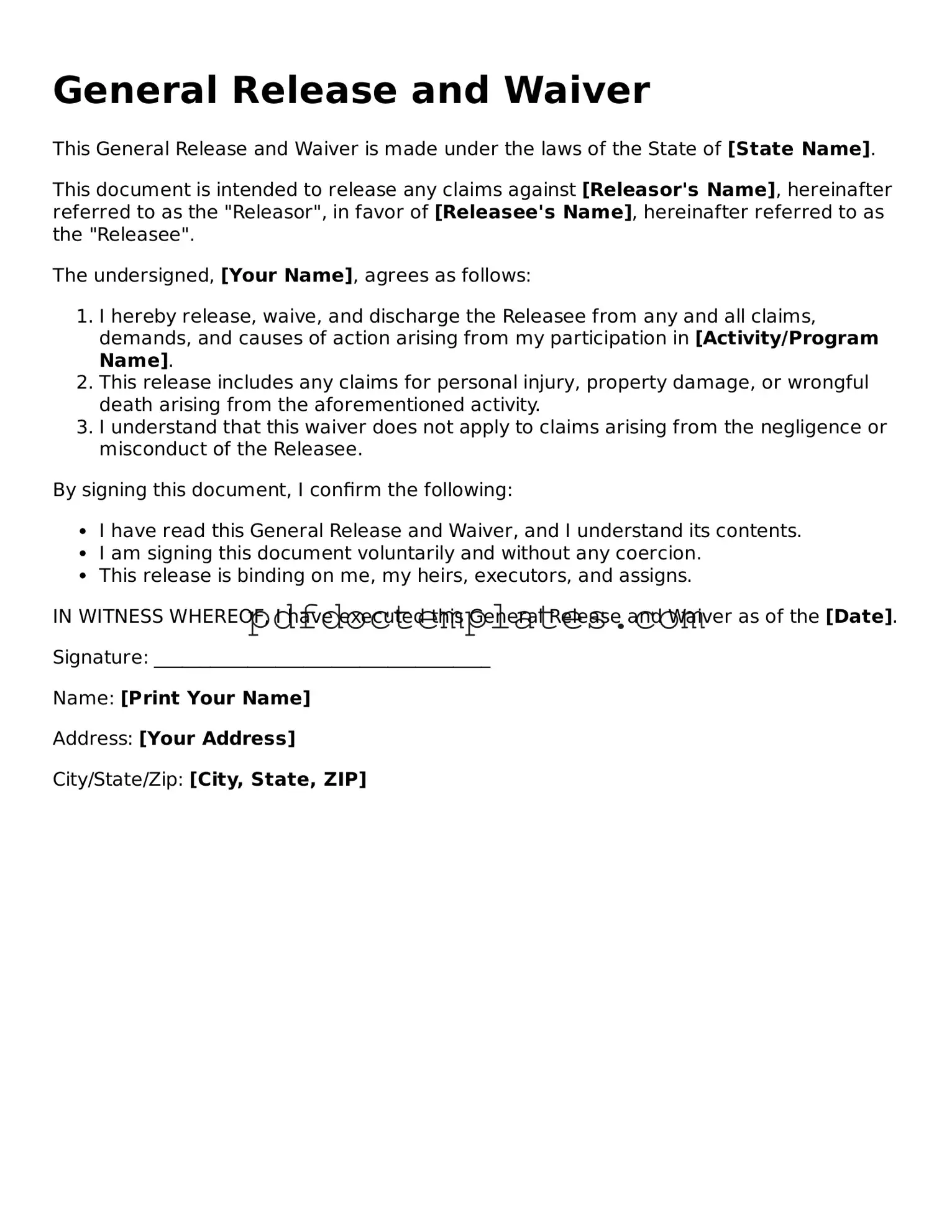Release of Liability Agreement
This Release of Liability Agreement (the "Agreement") is entered into by and between [Participant's Name], residing at [Participant's Address] (the "Participant"), and [Organization's Name], located at [Organization's Address] (the "Organization"), on this [Date].
In consideration for being allowed to participate in [Event/Activity] organized by the Organization, Participant agrees to release and hold harmless the Organization as follows:
- The Participant acknowledges that participation in [Event/Activity] carries inherent risks.
- The Participant voluntarily assumes all risks associated with the Event/Activity.
- The Participant releases the Organization, its officers, employees, agents, and volunteers from all liabilities, claims, and demands that may arise from participation.
- This release is governed by the laws of the State of [State].
The Participant certifies that they are of legal age to sign this Agreement and that they have read and understood its terms. The Participant has executed this Release of Liability freely and voluntarily.
IN WITNESS WHEREOF, the Participant has signed this Agreement as of the date first written above.
__________________________
[Participant's Signature]
[Date]
__________________________
[Organization Representative's Signature]
[Date]
